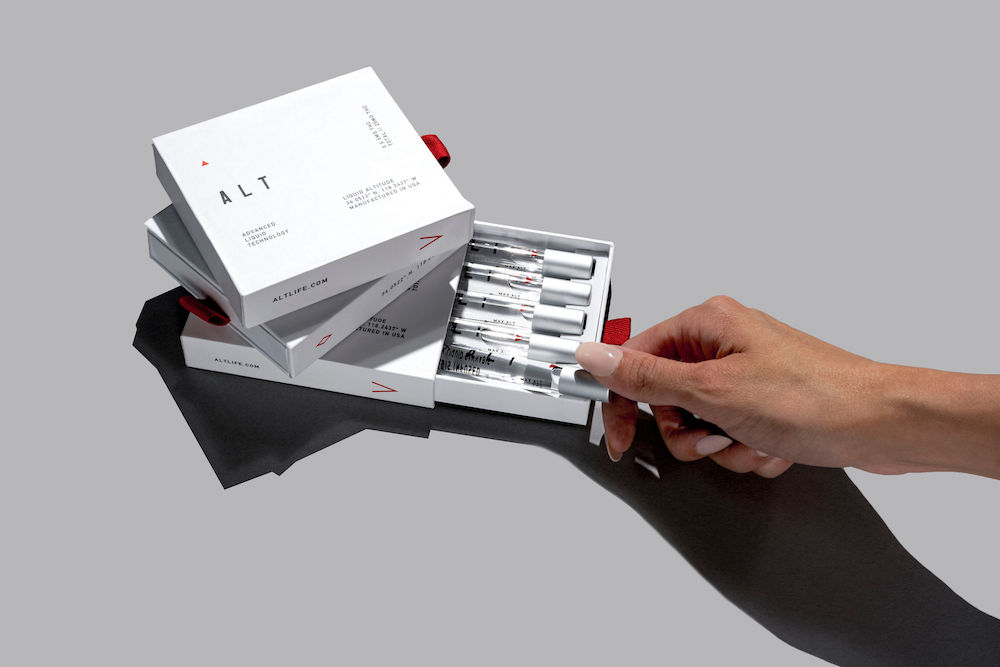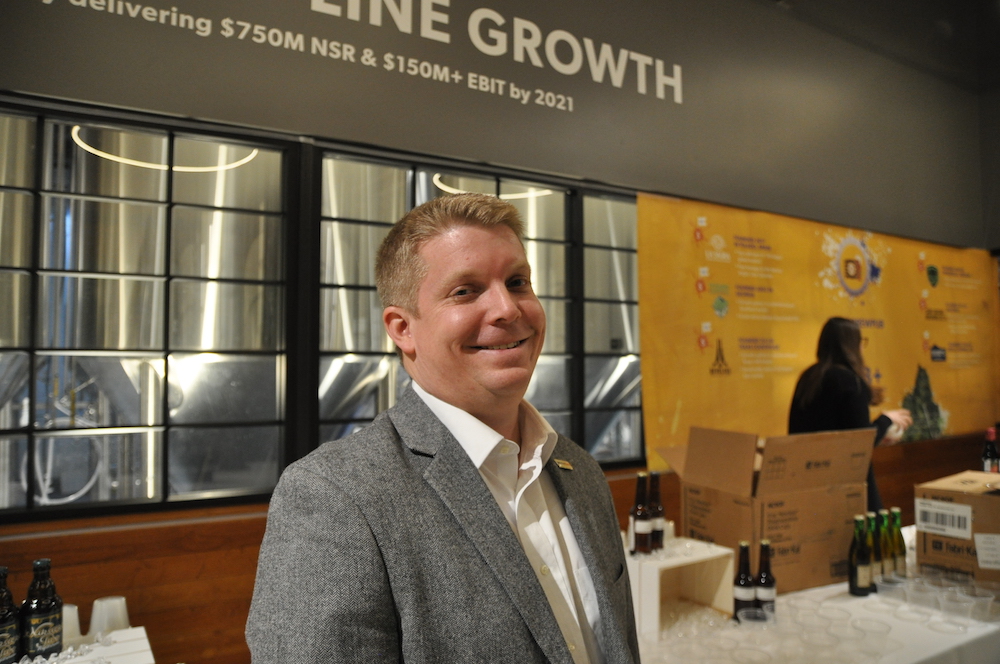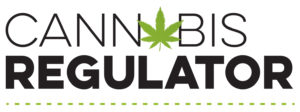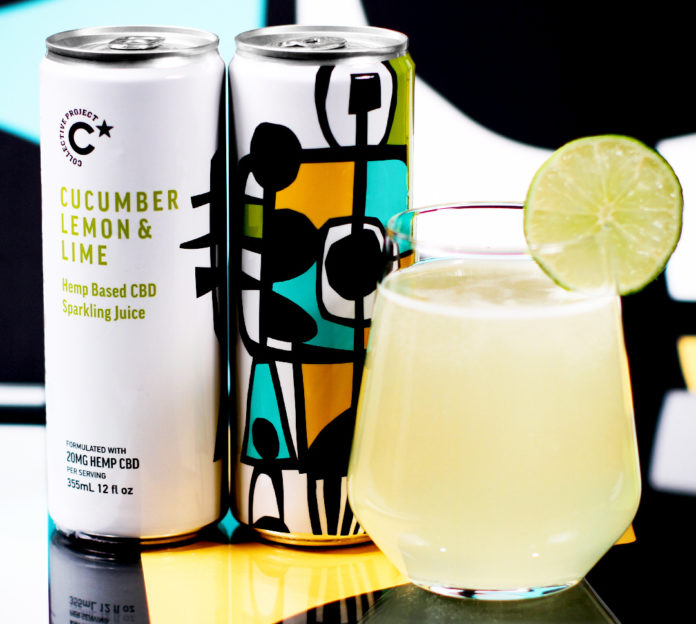Momentum continues to grow in America behind the legalization of marijuana and the rise of cannabis drinks.
Fifteen states, plus Washington D.C., have now passed laws that permit recreational pot. It’s legal down the entire western seaboard. And the CBD category reached an estimated global market size of $9.3 billion in 2020. By 2025, forecasts have that market reaching $23.6 billion.
Accordingly, we have seen a rise in new products. Among these innovations, THC and CBD beverages have rapidly emerged as a leading contender for the next big industry trend. Why smoke or consume cannabis when you can simply sip it?
This thinking is why so many companies have recently launched THC/CBD beverages, or have new releases in the pipeline. Helping fuel this boom is better technology in the sector, particularly for cannabis emulsification. Modern consumer trends have also played a big role.
Functional Beverages
Talk with nearly anybody involved in cannabis beverages and you will repeatedly hear the word “functional.” Most of these products aim for an easy-to-understand functionality that ties into people’s daily lives. This mirrors a broader trend right now in beverages that are designed as organic, healthier-for-you, and/or supportive of sleep, energy, activity, etcetera.
For instance: Rhythm, a new line of CBD seltzers. These drinks are vegan, gluten-free, non-GMO, keto-friendly, low-calorie, zero-sugar and contain no artificial sweeteners. Aligning with the functionality trend, each of Rhythm’s three offerings sports a name that clearly explains their intended benefits: Recover, Awake and Dream.
“These products apply to people who are into performance, whether that’s athletics of sleep performance,” explains Ian Monat, Rhythm CEO and founder. “People are expecting more and more out of their beverages.”
Awake contains 15 mg of hemp extract with 50 mg of natural organic caffeine. This is a common blend in CBD beverages: caffeine and cannabis. It’s also a common source of misunderstanding among consumers, Monat says. People mistake the cannabis component as another source of energy (or anxiety), when it’s the opposite.
“The CBD clears the mind and then the caffeine comes in and energizes you,” Monat explains.
Another brand with functionality at its core is Alt. These small, resealable vials —either 5 or 10 mg — contain a clear liquid infused with THC or CBD. Each mg is clearly marked off along the side of the packaging. Consumers know exactly how much cannabis they ingest. This supports microdosing: taking a little bit throughout the day.

“Functionality is one of the main pillars of our focus,” says Alt Co-founder Robert B. Davis. “We’re passionate about precision dosing. We’re empowering people to find that right dosage of cannabis that can elevate and enhance their lives.”
The smaller size of the vials is also part of the functionality. Alt comes in packages of one or five, which can fit in a pocket or purse like a carton of cigarettes. And it’s easier to take Alt into venues that do not allow glass bottles or cans.
“It’s a discrete way to consume,” says Davis. “It’s looked on more favorably in a social setting. Smoking or eating edibles isn’t as social.”
Sociability is another major theme of cannabis beverages. Drinking is a social activity. The producers of these products aim for occasions when consumers would spend time with friends and family.
“People want functional beverages as well as alternatives to alcohol,” says Matt Johnston, co-founder and CEO of Collective Arts Brewing, a highly regarded Canadian craft brewery. “We want to make drinks that are great for anytime of the day.”
Collective Arts recently launched a CBD-infused sparkling cocktail-inspired drinks line called Collective Project. Initial flavors include Raspberry & Hibiscus Rooibos Tea; Mango, Pineapple & Coconut; Cucumber, Lemon & Lime; Lemon Pear & Schisandra Green Tea.
“People are looking for better-for-you products, and consumers have become experiential,” says Johnston. “The days of high-sugar sodas are gone. People are looking for something that can create a more interesting experience.”
This has led to an explosion in flavors for THC/CBD beverages. Launched last summer by K-Zen, Mad Lilly Spritzers is a cannabis-infused line that includes spritzers with all-natural fruit juices, sparkling water and low dose blend of THC and CBD. The three flavor options are Ginger Pear, Passion Fruit Mango and Raspberry Hibiscus.
“We’re creating a broader set of choice for consumers,” explains K-Zen CEO and Co- Founder Judy Yee. “It’s really important to allow the consumer to discover their preferred flavor, because right now this category is still a novelty to them.”
So who exactly is buying these products?
“It’s still a small base but I think these beverages tie into a number of demographics,” says Johnston of Collective Arts. “Gen Z and Millennials are looking for drinks that are social and alcohol alternatives. And there’s also Baby Boomers who drink for health reasons, becoming more health-conscious.”
Agreeing with him is Monat of Rhythm.
“The demo is quite broad, and mirrors consumers who are into healthy trends,” he says. “At retail Rhythm is typically placed next to kombucha, aloe juices and infused botanical drinks.”
Cannabis cocktails have also benefited from the rise in THC/CBD beverages. Whether it’s mixing cannabis into a mocktail (as Millennials drink less alcohol), or combining pot with alcohol for a different effect.
“The synergistic effect can be perfect if you can get it right,” says Davis of Alt. “But it’s important to ease into that, starting low, until you find that sweet spot.”
Better Technology for Cannabis Drinks
Improved technology in the past several years is another big reason for the boom in THC/CBD beverages.
Cannabis extracts are not naturally water-soluble. Blending THC or CBD into liquid is not a smooth permeation, and can cause inconsistent dosages. Also, the cannabinoids sometimes stick to the insides of aluminum cans.
However, technology behind the emulsification of marijuana has recently taken a large step forwards. Solubility is now more precise and even.
“The ability to make cannabinoids act as though they are water-soluble is a huge step, because that greatly improves the bio-availability of the product,” says Alexey Peshkovsky, Ph. D. He’s co-founder, president and chief scientific officer of Industrial Sonomechanics, which specializes in high-intensity ultrasonic technology for liquid treatment. Reliably emulsifying cannabis allows for “reliable dosages, reducing the possible delivery methods to those that are simple, easy, and that everybody is used to,” Peshkovsky adds. In other words: beverages.
Before better emulsification, THC/CBD beverages could not always count on reliable dosages.
“It’s important that these products deliver on their label claims,” says David Durkee, VP of New Ventures at Quicksilver Scientific, which provides nanoemulsion delivery technology. “The industry falls down if consumers do not receive what’s in the beverage.”

Among the products made by Quicksilver Scientific are CBD liquids with additional all-natural ingredients with active benefits. This includes botanicals, melatonin and nutraceuticals.
“We do a wide array of actives,” says Durkee. “Things that help you relax, or make you more alert, or herbal medicines, anti-aging, aging healthfully, and lots of products around detox.”
The technology behind better emulsification is not new.The process comes from the pharmaceutical industry, where it is familiar, but only crossed over into cannabis in the past two-to-three years.
“This industry has not been led by science, so now the science has been catching up,” says Jeffrey Meyer, EVP and COO of Industrial Sonomechanics. “Every industry goes through this process. Think of computers in the ‘80s or cars in the ‘50s: these seminal moments of transition when it becomes a serious industry. That innovation is happening fast now” in cannabis.
This includes the technology behind flavors in cannabis beverages. Marijuana is not necessarily known for a pleasing taste. Blending it into drinks can risk an unpleasant palate.
Thankfully, “the flavor industry has improved greatly,” says Durkee. “With CBD substrate, you can make things flavor neutral, and then you can put whatever you want on top of that.”
What’s next for cannabis technology? How about synthetic compounds. Biomedican is a biotech startup developing a patented process to make pharmaceutical-grade, 100% organic, non-GMO rare cannabinoids. The result is THC/CBD at a fraction of the normal cost, says Biomedican President Dennis O’Neill, and with reliable uniformity.
“We get the same product every time, which is really important when looking at large distribution markets that need consistency,” O’Neill adds. “And we won’t have to worry about whether it has toxins in it, or what the concentration is. Our way is better, safer, cheaper and significantly greener.”
Consumer Education
Consumer knowledge of cannabis has come a long way. While some people still do not know the difference between THC and CBD, a fair amount understands the base distinction that one of those cannaboids is psychotropic, while the other is not.
Another point of education comes from a stigma shared with tequila. Many people suffered an unfortunate night in college of taking too many shots, and now as adults hesitate to drink even premium añejo. So, too, is it with cannabis.
“We have to educate people why drinking a cannabis beverage is different than that brownie they tried 10 years ago that absolutely knocked them out,” says Yee of K-Zen.
As cannabis products play into the healthier-for-you trend, the lab testing of THC and CBD remains critical in consumer education.
“This part is extremely important because consumers want to know what they’re putting into their bodies,” says Monat. “Every batch of Rhythm made is run through a Certificate of Analysis test — including potency. We place the results on our website, and also link to the results through a QR code on our cans.”
Federal Legalization
Late in 2020, the U.S. House of Representatives passed a landmark bill that would have decriminalized marijuana nationwide. The legislation included delisting cannabis as a federally controlled substance, and erasing certain federal convictions connected with the drug. The bill was not picked up by the Senate, still then controlled by Republicans.
Election Day 2020 shifted power in Washington D.C. Democrats now possess the majority in both chambers of Congress, along with the White House. This massive shift has many cannabis professionals feeling optimistic for the future of THC and CBD at the federal level.
However, few people predict major cannabis movement in the U.S. government in the coming months.
“The FDA is pretty busy right now trying to get Covid vaccines distributed,” says Monat of Rhythm. “I don’t see the FDA getting to cannabis in the first half of 2021. Maybe at the back half of 2021 at the earliest, but it is just a matter of time. We already have 30 million CBD users in the U.S.”
“I’d like to see an FDA ruling that defines CBD as a dietary supplement,” he adds. “I think it should be regulated as a vitamin.”
It’s unlikely that Washington D.C. will completely legalize all at once. Rather than a sudden change, the government will likely enact a series of improvements for the U.S. marijuana industry over time.
For instance: currently it’s illegal to conduct cannabis business across state lines. This restricts the scope of distribution for THC/CBD products, and adds another hurdle in their already-difficult production.
“Why shouldn’t states that have legal cannabis be able to conduct business together?” Yee of K-Zen asks rhetorically.
She, like many others in the industry, would welcome greater FDA involvement in defining THC and CBD products.
“Some retailers are squeamish in taking on these products because CBD is still such a grey area,” Yee says. “FDA definition could help mainstream retail companies feel at ease in this space. I’m excited to see the FDA get involved.”
Agreeing with her is Durkee of New Ventures.
“The Wal-Marts and Krogers of the world are not going to take CBD seriously until wider federal legality,” he says.
However, Durkee does not see Democratic majority at the federal level as an automatic slam-dunk for cannabis progress.
“I actually don’t think that Democrats holding power in Washington D.C. necessarily paves the way towards all things becoming legal,” he says. “It’s not necessarily about who’s in charge, but time and awareness. As the level of awareness arises, it raises all boats. More people will understand CBD and THC, including the regulators who ultimately allow it into the marketplace.”
What’s Next for Cannabis Drinks?
The political, social and health crises of the past year — and ongoing — have certainly put many people in the mood for a relaxant.
“We’re all a little stressed of late,” says Johnston of Collective Arts. “That makes CBD and its anti-anxiety affect a great alternative to alcohol.”
Moving forwards, it stands to reason that THC and CBD will continue gaining consumer interest. Simultaneously, the industry will also evolve with better business, laws and technology.
“The industry has come a long, but there’s still a long way to go yet,” says Durkee of Quicksilver Scientific. “We’re still in the middle of the journey.”
Kyle Swartz is editor of Cannabis Regulator. Reach him at kswartz@epgmediallc.com or on Twitter @kswartzz.










